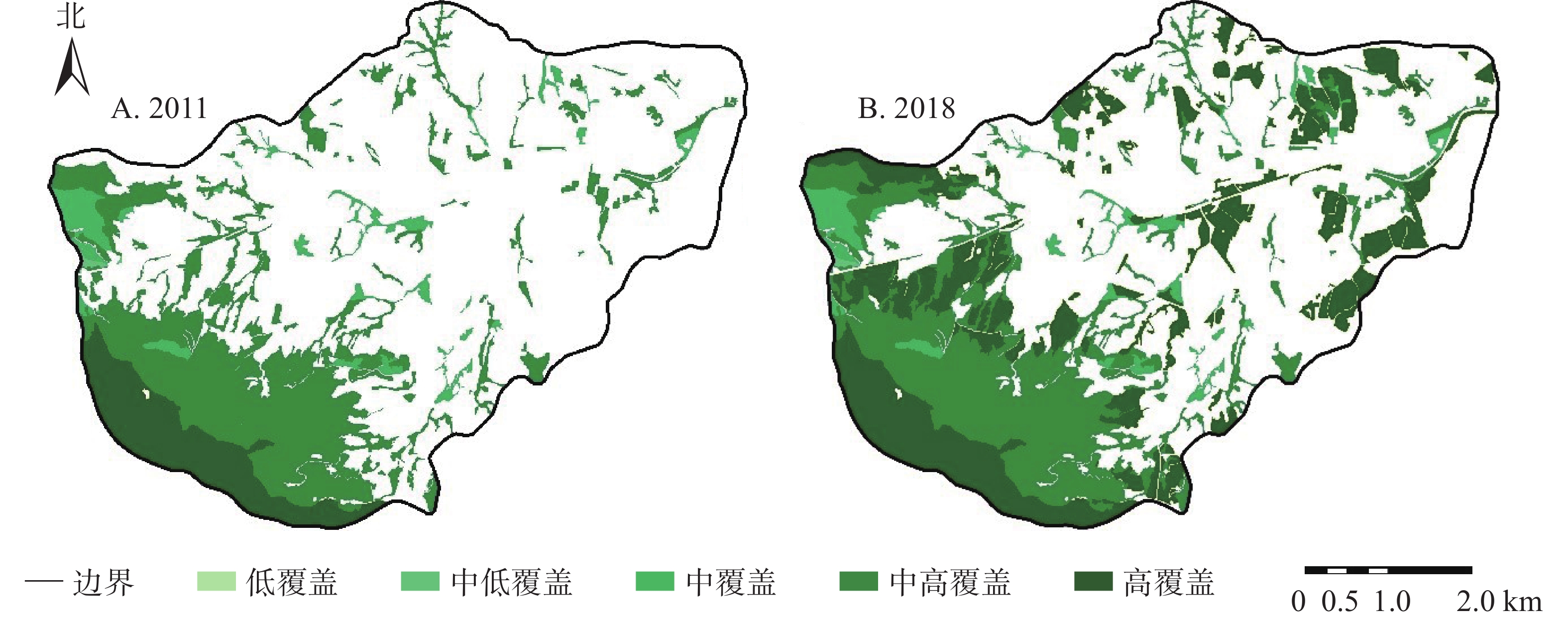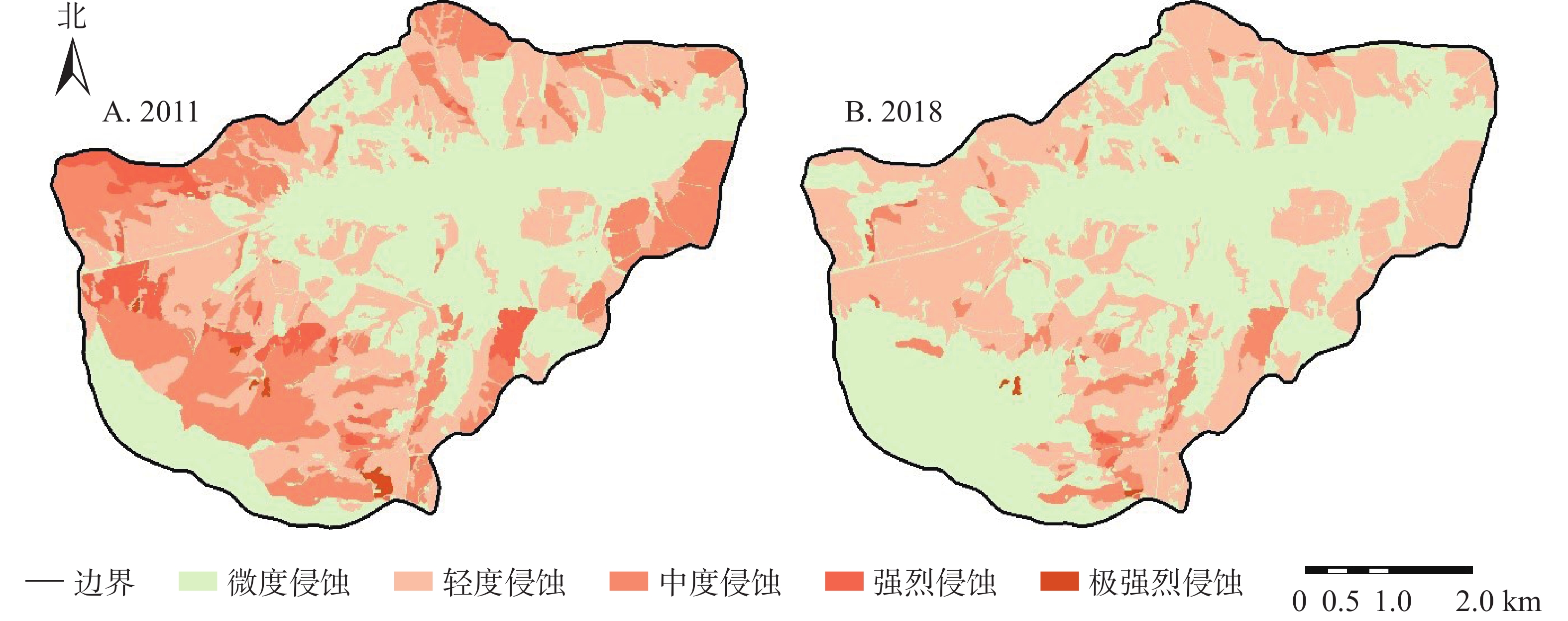-
国家水土保持重点工程起源于1983年实施的全国八大片水土流失重点治理区,是中国目前正在大规模实施的以小流域(或片区)为单元的水土流失综合治理工程[1]。经过约30 a的实践,已形成了一套包括治理规划、措施设计、审查、施工、检查、验收等环节相对完善的技术与管理体系,为国家水土保持重点工程的实施提供了有力保障。随着经济社会发展以及行业监管精准化要求,传统的技术与管理模式难以适应新形势需求。如何利用信息化技术和手段,以图斑为单元,对国家水土保持重点工程实施精细化管理成为水行政主管部门亟待解决的重要问题之一。目前,有关国家水土保持重点工程的调查和研究还局限于对重点工程项目实施的措施、成效及经验等方面的总结[2-4],而针对重点工程项目治理效果的定量化评估还缺乏系统研究,因此,系统调查与定量分析重点工程实施后水土流失治理、水土保持措施保存、林草植被覆盖以及水土流失变化等,对认识和评价重点工程的水土保持效果具有重要意义。山东省临沂市蒙阴县张家村小流域于2012年列入国家水土保持重点工程治理项目,2013年竣工验收。本研究以张家村小流域为研究对象,以2011年作为重点工程实施前的基础年、2018年作为重点工程实施后的评估年,基于高分遥感、无人机、移动终端等技术,通过定位调查及实地复核,以图斑为单元,对比分析小流域治理实施前后土地利用、林草植被覆盖、水土保持措施和水土流失状况变化,开展实施效果定量分析,以期为国家水土保持重点工程的精准化监管提供基础数据和技术支撑。
HTML
-
张家村小流域地处国家级重点治理区蒙阴县西南部(35°38'21"~35°41'22"N,117°44'19"~117°48'32"E),土地利用面积2 913.45 hm2。地势西高东低,最高点位于西南部大望山山顶,最低点位于东北部龙榜崖村河道,海拔高差429.4 m。属暖温带半湿润季风气候,多年平均气温13.5 ℃,多年平均降水量776.0 mm。地表岩性以花岗片麻岩为主,主要土壤类型为棕壤。地带性植被属暖温带落叶阔叶林,现状植被以人工林和天然杂草为主,主要乔木有油松Pinus tabulaeformis、赤松Pinus densiflora、刺槐Robinia pseudoacacia、麻栎Quercus acutissima;主要灌草植被有黄荆Vitex negundo、酸枣Ziziphus jujuba、胡枝子Lespedeza bicolor、结缕草Zoysia japonica等。
-
基于2011和2018年2 m分辨率遥感影像,采用人机交互解译,提取土地利用、水土保持措施,计算林草植被覆盖度[5];基于1∶1万地形图提取坡度坡长;根据土地利用、植被覆盖、坡度等信息,分别构建小流域2011年的水土保持基础图斑和2018年的评估效果图斑。
-
基于全国水土保持信息管理系统内的张家村小流域初步设计与验收资料、小流域矢量边界、点线面措施等基础数据,利用奥维互动地图,通过实地调查及无人机航拍,开展水土保持措施、土地利用、植被状况等测定、核查及信息采集[6-11]。
-
依据水利行业标准SL 190−2007《土壤侵蚀分类分级标准》,以及土地利用、植被覆盖、水土保持措施验收及实施情况核查等数据,通过分析水土流失面积消减率(R)、水土流失治理度(G)、水土保持措施保存率(P)、林草覆盖率(F)和提高率(I)等指标,评估国家水土保持重点工程实施效果。具体指标计算如下:
$R = ({{\left| {{S_{\rm{e}}} - {S_{\rm{f}}}} \right|}}/{{{S_{\rm{f}}}}}) \times 100\% $ 。 其中:R为水土流失面积消减率(%),Se为评估年水土流失面积(hm2),Sf为基础年水土流失面积(hm2)。$G = ({C_{\rm{e}}}/{S_{\rm{f}}}) \times 100\% $ 。其中:G为水土流失治理度(%),Ce为重点工程水土流失治理面积(hm2)。$P = ({N_{\rm{e}}}/{N_{\rm{a}}}) \times 100\% $ 。其中:P为水土保持单类措施保存率(%),Ne为评估年该项措施实测数量,Na为竣工验收时该项措施的实测数量。$F = ({F_{\rm{e}}}/{A}) \times 100\% $ 。其中:F为评估年林草覆盖率(%),Fe为评估年林草覆盖面积(hm2),A为研究区总面积(hm2)。$I = \left[(F_{\rm{e}} - {F_{\rm{f}}})/{A}\right] \times 100\%$ 。其中:I为林草覆盖提高率(%),Fe为评估年林草覆盖面积(hm2),Ff为基础年林草覆盖面积(hm2)。
1.1. 研究区概况
1.2. 研究方法
1.2.1. 基础图斑与效果图斑构建
1.2.2. 水土保持措施数据采集
1.2.3. 重点工程实施效果评估
-
从图斑数量看(图1),2011年基础图斑数量总计924个,其中坡耕地图斑数量最多,为251个,占27.16%;其次为旱梯田191个图斑,占20.67%;村庄居民点180个,占19.48%;有林地163个,占17.64%;果园数量较少,仅55个图斑,占5.95%。2018年实施效果图斑数量共946个,其中坡耕地图斑120个,占12.68%;旱梯田190个图斑,占20.08%;村庄居民点图斑数量最多,207个,占21.88%;有林地155个,占16.38%;果园185个,占19.56%。
从图斑面积看,2011年基础图斑中坡耕地面积占比最大,达31.89%,其次为有林地(27.66%)、旱梯田(23.86%),村庄居民点及果园面积占比分别为7.39%、3.47%。2018年效果图斑中旱梯田、有林地面积占比相当,分别为28.44%、28.22%,其次为果园面积,占比17.46%,坡耕地面积占比12.06%,村庄居民点占比7.96%(图1)。
从空间分布看,2011年耕地广泛分布于流域内中东部丘陵区域,在村庄居民点周围呈现大面积、片状、集中特点,且坡耕地和旱梯田交错分布;有林地则主要集中在流域内西部山区,呈大面积集中连片分布;果园较少,零星分布在流域内西部山前过渡带以及村庄周围。2018年耕地在空间上仍广泛分布于流域内中东部丘陵区,但旱梯田优势明显,呈大面积集中片状分布,坡耕地呈块状零散分布于村庄周边;有林地仍集中连片在流域内西部山区;果园分布扩张明显,在流域西部山前过渡带呈集中带状分布,且在村庄周围呈大面积块状聚集(图2)。
-
张家村小流域重点工程实施前后图斑变化数量339个,变化面积870.60 hm2。变化方向主要为坡耕地/旱梯田转变为果园,图斑变化数量132个,变化面积364.07 hm2,分别占变化图斑数量和面积的38.94%、41.82%%;其次为坡耕地转变为旱梯田,图斑变化数量77个,变化面积343.77 hm2,分别占变化图斑数量和面积的22.71%、39.49%(表1)。重点工程实施前后坡耕地图斑数量和面积减少最多,图斑数量减少了191个、面积减少了578.59 hm2;果园数量和面积增加最多,共增加156个图斑、407.53 hm2。
实施前后变化方向 计数/个 面积/hm2 实施前后变化方向 计数/个 面积/hm2 村庄居民点—有林地 1 1.06 旱梯田—村庄居民点 1 0.14 果园—村庄居民点 6 3.36 旱梯田—果园 71 189.95 果园—有林地 4 8.69 旱梯田—有林地 10 20.56 坡耕地—村庄居民点 32 13.87 有林地—采矿用地 2 0.78 坡耕地—果园 61 174.12 有林地—村庄居民点 6 1.14 坡耕地—坑塘水面 3 1.22 有林地—果园 34 55.51 坡耕地—旱梯田 77 343.77 有林地—农村道路 1 0.13 坡耕地—有林地 23 49.16 有林地—坡耕地 5 3.56 旱梯田—采矿用地 1 1.80 有林地—旱梯田 1 1.79 总计 339 870.60 Table 1. Direction of land use change before and after the implementation of the key projects
-
2011年研究区林草植被面积906.94 hm2,林草植被覆盖率31.13%,以60%~75%的中高覆盖度为主,面积为629.62 hm2;≥75%的高覆盖度次之,面积为181.30 hm2,主要分布在西南部山区。2018年林草植被面积1 331.03 hm2,林草植被覆盖率45.69%,仍以60%~75%的中高覆盖度为主,面积为720.15 hm2;≥75%的高覆盖度次之,面积为494.37 hm2,集中分布在西南部、西北部山区,片状分布在东部(图3)。2011–2018年,项目区林草植被面积增加了424.09 hm2,林草植被覆盖提高率达14.56%。
-
2011−2018年,林草植被覆盖度发生变化的面积为797.73 hm2(表2),占研究区总面积的27.38%。林草植被转入面积434.84 hm2,占林草植被变化面积的54.51%,主要是经济果林种植面积增加;林草植被转出面积10.75 hm2,占1.3%。各覆盖度等级变化中,高覆盖度增加最多,占林草新增面积73.82%。
2011年面积/hm2 2018年面积/hm2 林草植被面积 非林草
植被面积转出面积 低覆盖 中低覆盖 中覆盖 中高覆盖 高覆盖 林草植被面积 低覆盖 0 0 0 0 0 0.10 0.10 中低覆盖 0 2.74 0 0 0 0.10 0.10 中覆盖 0 0 52.23 39.07 0 1.78 40.85 中高覆盖 0 0 0 307.78 313.07 8.77 321.84 高覆盖 0 0 0 0 181.30 0 0 非林草植被面积 0 22.89 38.67 373.28 0 1571.67 434.84 转入面积 0 22.89 38.67 412.36 313.07 10.75 797.73 Table 2. Transfer matrix of vegetation coverage change direction of forest and grass coverage from 2011 to 2018
-
根据2013年验收成果(表3),研究区实施了点—线—面结合的治理措施,面状措施总计1172.48 hm2,其中封禁治理486.62 hm2、经济果林179.00 hm2、水土保持林37.89 hm2、土坎梯田468.97 hm2;点状措施总计28座,包括蓄水池9个、谷坊9座、山塘堰坝10座;线状措施为配套的生产道路8 km。
项目 点状措施 线状措旆 面状措施 水土流失治理
面积/hm2蓄水池/个 谷坊/座 山塘堰坝/座 生产道路/km 封禁治理/hm2 经济果林/hm2 水保林/hm2 土坎梯田/hm2 实施数量 9 9 10 8.00 486.62 179.00 37.89 468.97 1172.48 现存数量 9 5 8 7.24 449.32 153.86 30.89 448.09 1082.16 差异 0 −4 −2 −0.76 −37.30 −25.14 −7.00 −20.88 −90.32 保存率/% 100.00 55.56 80.00 90.51 92.34 85.95 81.51 95.55 Table 3. Statistical table for preservation condition of soil and water conservation measures
-
根据2018年水土保持措施调查数据(表3),除蓄水池数量与验收数据一致外,其余水土保持措施面积、数量均有一定程度减少。面状措施现存1082.16 hm2,较验收数据减少90.32 hm2,点状措施谷坊现存5座,山塘堰坝现存8座,分别减少了4座和2座;线状措施生产道路现存7.24 km,减少了0.76 km。
从水土保持措施保存效果看,除谷坊受损严重,保存率仅为55.56%之外,其余水土保持措施保存率均在80.00%以上。其中蓄水池保存率达100.00%;土坎梯田、封禁治理措施和生产道路措施保存率在90.00%~100.00%;经济果林、水土保持林和山塘堰坝措施保存率为80.00%~90.00%。
从空间分布看(图4),封禁治理措施集中在西南部,水土保持林措施主要分布在西北部,经济果林措施和土坎梯田措施呈片状分布在王家村西南和西北部、许家沟村北部、龙榜崖村北部、南炉村东南部和西宝兴店村南部,蓄水池零散分布在东部耕地区域。
-
2011年,研究区水土流失面积1724.83 hm2,占总面积59.12%。其中轻度侵蚀908.99 hm2,占水土流失面积52.70%,其次为中度侵蚀678.75 hm2,占39.35%。2018年,水土流失面积1324.44 hm2,占土地利用总面积45.45%。仍以轻度侵蚀为主,面积为1185.53 hm2,占水土流失面积89.51%;中度侵蚀面积125.4 hm2,仅占9.47%(图5)。
土壤侵蚀强度等级变化面积938.58 hm2,占总面积32.22%。土壤侵蚀强度等级呈降低趋势,侵蚀强度等级降低面积901.58 hm2,占变化面积96.06%;侵蚀强度等级升高面积仅37.00 hm2,占变化总面积3.94%;侵蚀等级面积变化最大的为中度侵蚀,其次为强烈侵蚀和极强烈侵蚀(表4)。
2011年面积/hm2 2018年面积/hm2 微度侵蚀 轻度侵蚀 中度侵蚀 强烈侵蚀 极强烈侵蚀 转出面积 微度侵蚀 1151.61 35.94 1.06 0 0 37.00 轻度侵蚀 193.79 715.21 0 0 0 193.79 中度侵蚀 243.31 340.89 94.56 0 0 584.19 强烈侵蚀 0.31 92.12 24.39 10.49 0 116.82 极强烈侵蚀 0 1.38 5.39 0 3.02 6.76 转入面积 437.4 470.32 30.84 0 0 938.56 Table 4. Transfer matrices of soil erosion intensity change
-
2011−2018年,重点工程实施前后水土流失面积减少了400.39 hm2,水土流失面积消减率达23.21%。评估年治理水土流失面积1082.16 hm2,水土流失治理度76.78%。
研究区不同措施类型区对水土流失的防控效果不同(表5)。土坎梯田措施区水土流失面积消减率达20.74%。除轻度侵蚀增加外,其余高强度侵蚀等级水土流失面积均减少,主要是原有坡耕地区域实施土坎梯田措施,达到保持水土的效果;经济果林措施区水土流失面积消减率2.80%,土壤侵蚀强度整体呈下降趋势,2018年土壤侵蚀强度等级均为轻度;封禁治理措施区、水土保持林措施区水土流失面积消减率分别为84.82%、78.64%,水土流失防控效果显著。
措施类型 年份 轻度侵
蚀/hm2中度侵
蚀/hm2强烈侵
蚀/hm2极强烈侵
蚀/hm2水土流失
面积/hm2措施类型 年份 轻度侵
蚀/hm2中度侵
蚀/hm2强烈侵
蚀/hm2极强烈侵
蚀/hm2水土流失
面积/hm2土坎梯田 2011 137.69 234.60 45.09 0.83 418.21 封禁治理 2011 65.98 197.63 −1.86 3.90 269.37 2018 325.17 6.30 0 0 331.47 2018 17.05 20.93 0.06 2.84 40.88 增减 187.48 −228.30 −45.09 −0.83 −86.74 增减 −8.93 −176.70 −1.80 −1.06 −228.49 经济果林 2011 51.07 29.54 1.43 0 82.04 水土保持林 2011 8.09 21.55 0 0 29.64 2018 79.74 0 0 0 79.74 2018 6.33 0 0 0 6.33 增减 28.67 −29.54 −1.43 0 −2.30 增减 −1.76 −21.55 0 0 −23.31 Table 5. The statistics of soil and water loss in different measures
2.1. 水土保持基础图斑与效果图斑时空分布及变化
2.1.1. 重点工程实施前后图斑时空分布
2.1.2. 重点工程实施前后图斑变化
2.2. 林草植被覆盖状况评估
2.2.1. 重点工程实施前后林草植被覆盖状况
2.2.2. 重点工程实施前后林草植被覆盖度转移
2.3. 水土保持措施保存效果评估
2.3.1. 水土保持措施实施统计
2.3.2. 水土保持措施保存效果
2.4. 水土流失治理效果评估
2.4.1. 水土流失及变化
2.4.2. 水土流失治理效果评估
-
根据国家水土保持重点工程信息化监管技术规定,开展实施效果评估的项目原则为竣工验收后1~5 a的重点工程。本研究区张家村小流域于2013年竣工验收,2018年开展重点工程实施效果评估,属竣工验收后5 a项目,水土保持措施中除蓄水池数量保存完好外,其余措施均有一定程度减少。这与竣工验收后年限选取有直接关系,评估年与竣工验收时间间隔越长,对水土保持措施保存率影响越大。为对比分析重点工程实施效果,仍需进一步探索不同区域或同一区域重点工程实施效果评估年时限对水土保持措施的影响。
-
水土保持基础图斑中坡耕地图斑数量与面积占比最大,效果图斑中则以旱梯田和有林地为主;评估年与基础年相比,图斑变化数量为339个,变化面积870.60 hm2,变化方向主要为坡耕地/旱梯田转变为果园,其次为坡耕地变转为旱梯田;重点工程实施前后坡耕地图斑数量和面积减少最多,果园数量和面积增加最多。
基础年林草植被面积906.94 hm2,林草覆盖率31.13%;评估年林草植被面积1331.03 hm2,林草覆盖率为45.69%。覆盖度均以中高覆盖(60%~75%)为主,林草覆盖提高率达14.56%。
水土保持措施现状除蓄水池数量与验收数据一致外,其余水土保持措施面积、数量均有一定程度减少。蓄水池保存率最高,谷坊受损最严重,保存率仅55.56%,其余水土保持措施保存率均在80.00%以上。
评估年较基础年水土流失面积减少了400.39 hm2,水土流失面积消减率23.21%,水土流失治理度76.78%;不同措施类型区对水土流失防控效果不同,封禁治理措施区、水土保持林措施区水土流失面积消减率分别为84.82%、78.64%,土坎梯田措施水土流失面积消减率达20.74%,经济果林措施区水土流失面积消减率2.80%。
国家重点工程项目数据库中缺失山塘堰坝、谷坊、蓄水池和生产道路的准确地理位置,这给野外复核工作带来了很大困难。建议国家重点工程相关数据入库时,明确要求提供矢量图件以及各项水土保持措施的精准位置信息,以便精准评估实施效果。




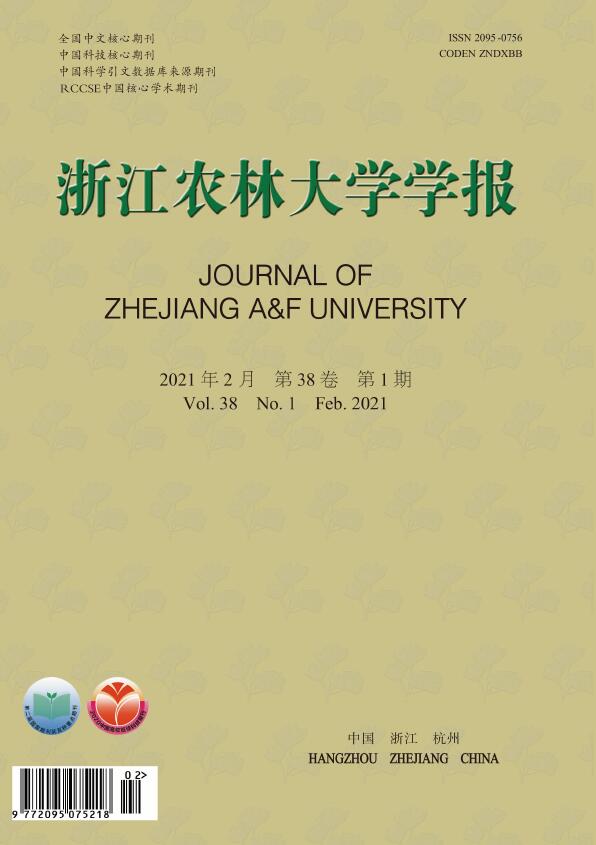










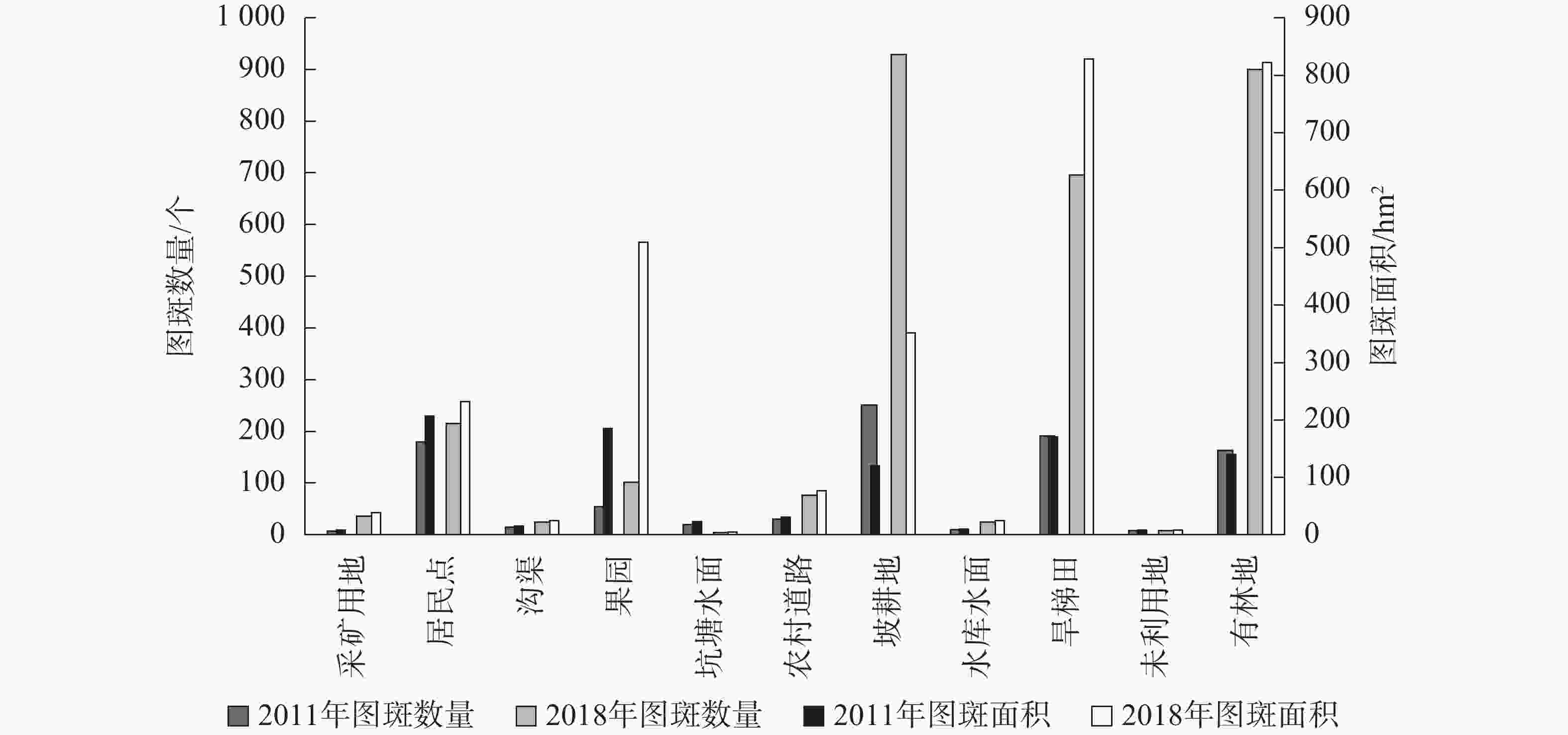
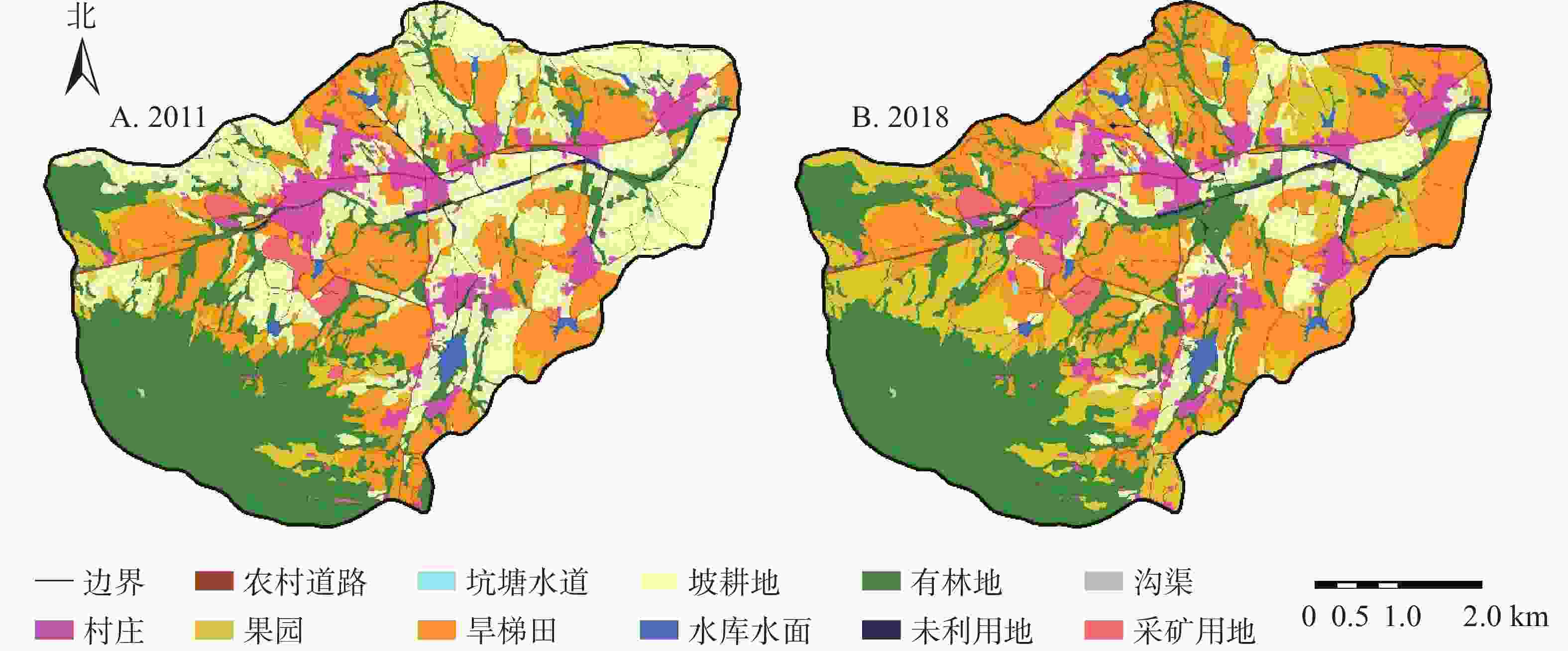
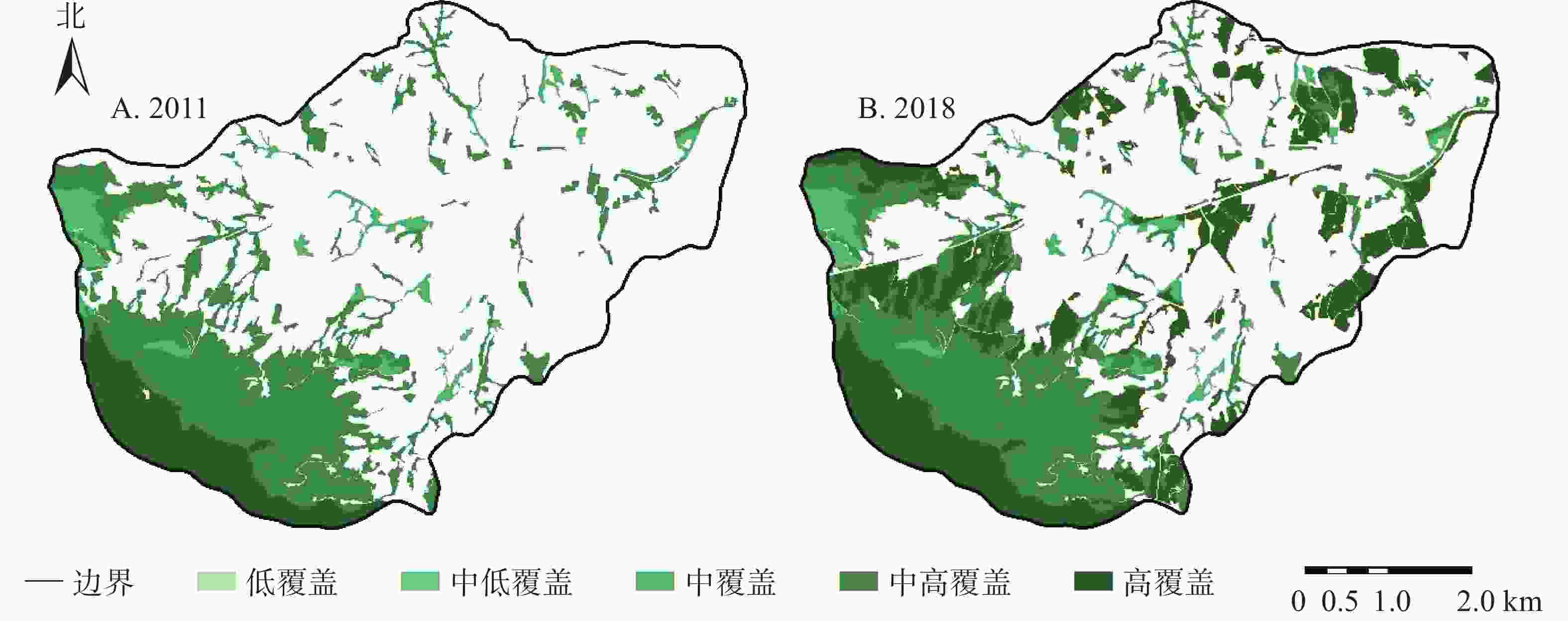


 DownLoad:
DownLoad:

